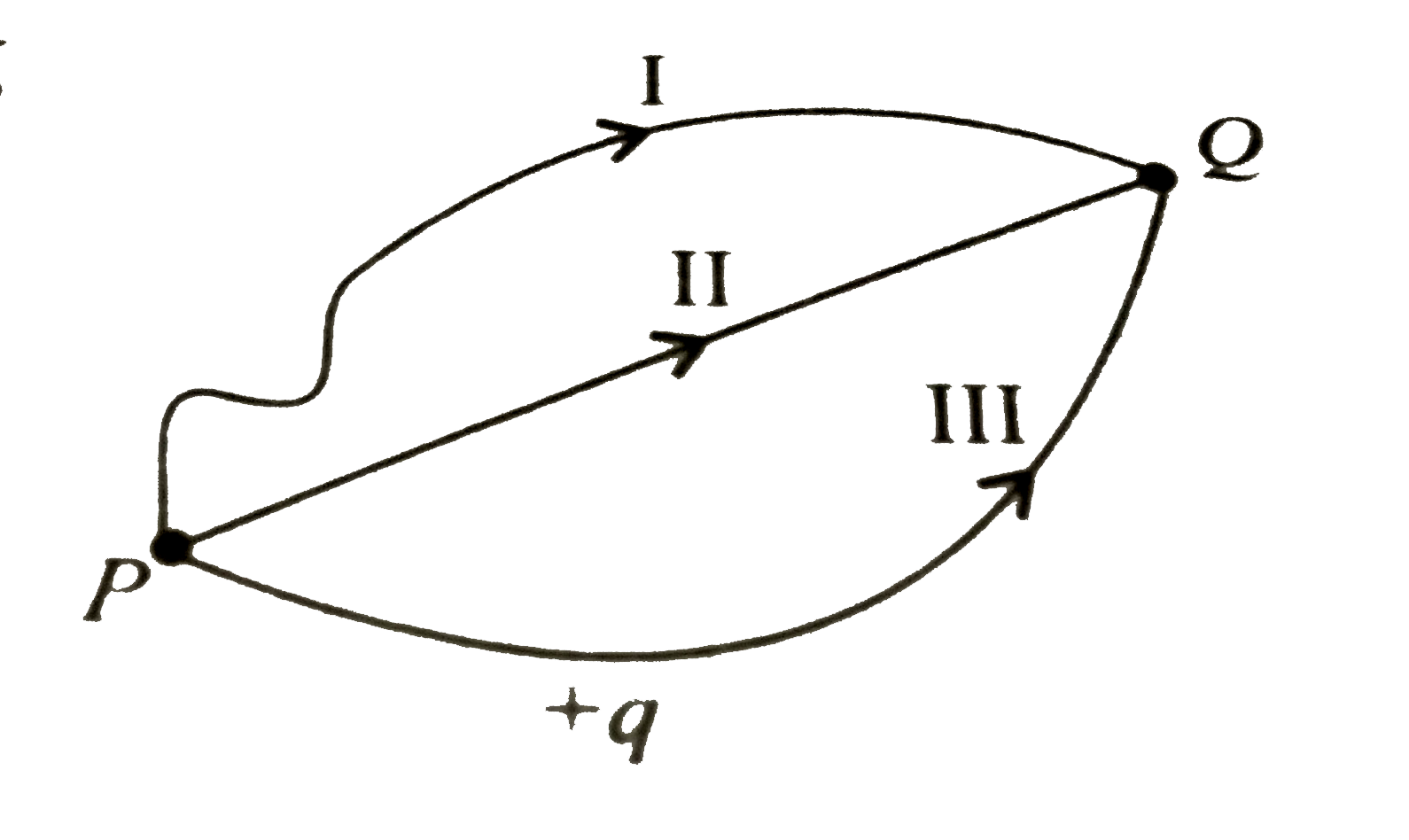When the positively charged hanging pendulum bob is made fixed, the work done in slowly shifting a unit positive charge from infinity to P is V. If the pendulum is free to move, the corresponding work done id V'. Then.
A
V=V'
B
V>V'
C
V<V'
D
V≤V'
Video Solution
Text Solution
The correct Answer is:b
If bob is positively charged, it will be repelled by unit positive charge and in second case, distance between charges may increase. Thus final energy in second case may be less than in first case. Hence, less work may be done in second case.
|
Topper's Solved these Questions
- ELECTRIC POTENTIALBOOK - CENGAGE PHYSICSCHAPTER - ELECTRIC POTENTIALEXERCISE - Multiple Correct
10 Videos
- ELECTRIC POTENTIALBOOK - CENGAGE PHYSICSCHAPTER - ELECTRIC POTENTIALEXERCISE - Comprehension
31 Videos
- ELECTRIC POTENTIALBOOK - CENGAGE PHYSICSCHAPTER - ELECTRIC POTENTIALEXERCISE - Subjective
28 Videos
- ELECTRIC FLUX AND GAUSS LAWBOOK - CENGAGE PHYSICSCHAPTER - ELECTRIC FLUX AND GAUSS LAWEXERCISE - MCQ s
38 Videos
- ELECTRICAL MEASURING INSTRUMENTSBOOK - CENGAGE PHYSICSCHAPTER - ELECTRICAL MEASURING INSTRUMENTSEXERCISE - M.C.Q
2 Videos
Similar Questions
Knowledge Check
The work done in taking a unit positive charge from P to A is WA and P to B is WB. Then
 .AWA>WBBWA<WBCWA=WBDWA+WB=0
.AWA>WBBWA<WBCWA=WBDWA+WB=0What is the work done in moving a unit positive charge from infinity to that point in electric field called?
AElectric potentialBPotential differenceCElectric currentDElectric circuitsThe work done in bringing a unit positive charge from infinity to the given point against the direction of electric intensity is
Aelectric potentialBmagnetic potentialCgravitational potentialDnone of these
Work done in moving a positive charge on an equipotential surafce is
View SolutionIf 6W is the work done in bringing a infinitesimal small test charge 6g from infinity to a point P, then potential at point P is
View SolutionWork done (by the external force) per unit positive test charge in bringing it from infinity to the point is negative, for
View SolutionThe work done in moving a charge from one point to the other is 20J. If the potential difference between the points is 10V, the charge is:
View SolutionWhen a test charge is brough in from infinity along the perpendicular bisector of an electric dipole the work done is
View Solution
